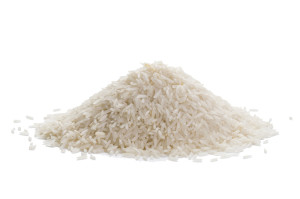Brands

from USA

The edible seed is a grain 5–12 mm (0.20–0.47 in) long and 2–3 mm (0.079–0.118 in) thick. The traditional method for cultivating rice is flooding the fields while, or after, setting the young seedlings. This simple method requires sound planning and servicing of the water damming and channeling, but reduces the growth of less robust weed and pest plants that have no submerged growth state, and deters vermin. While flooding is not mandatory for the cultivation of rice, all other methods of irrigation require higher effort in weed and pest control during growth periods and a different approach for fertilizing the soil
Crops
- JAN
- FEB
- MAR
- APR
- MAY
- JUN
- JUL
- AUG
- SEP
- OCT
- NOV
- DEC

from India

The edible seed is a grain 5–12 mm (0.20–0.47 in) long and 2–3 mm (0.079–0.118 in) thick. The traditional method for cultivating rice is flooding the fields while, or after, setting the young seedlings. This simple method requires sound planning and servicing of the water damming and channeling, but reduces the growth of less robust weed and pest plants that have no submerged growth state, and deters vermin. While flooding is not mandatory for the cultivation of rice, all other methods of irrigation require higher effort in weed and pest control during growth periods and a different approach for fertilizing the soil.
Crops
- JAN
- FEB
- MAR
- APR
- MAY
- JUN
- JUL
- AUG
- SEP
- OCT
- NOV
- DEC

from Egypt

The edible seed is a grain 5–12 mm (0.20–0.47 in) long and 2–3 mm (0.079–0.118 in) thick. The traditional method for cultivating rice is flooding the fields while, or after, setting the young seedlings. This simple method requires sound planning and servicing of the water damming and channeling, but reduces the growth of less robust weed and pest plants that have no submerged growth state, and deters vermin. While flooding is not mandatory for the cultivation of rice, all other methods of irrigation require higher effort in weed and pest control during growth periods and a different approach for fertilizing the soil
Crops
- JAN
- FEB
- MAR
- APR
- MAY
- JUN
- JUL
- AUG
- SEP
- OCT
- NOV
- DEC




Nutrition
Average per 100g*- Calories360
- Total Fat1g
- Saturated Fat0g
- Cholesterol0mg
- Sodium1mg
- Total Carbohydrate79g
- Protein7g
Storing

The best temperature to store grains, including rice, is 4,44℃ (40℉) or below; however, rice stored at a constant 21,11℃ (70℉) with oxygen absorbers will store well for up to 10 years. In cooler storage areas rice sealed in oxygen-free containers can be stored for up to 30 years.

